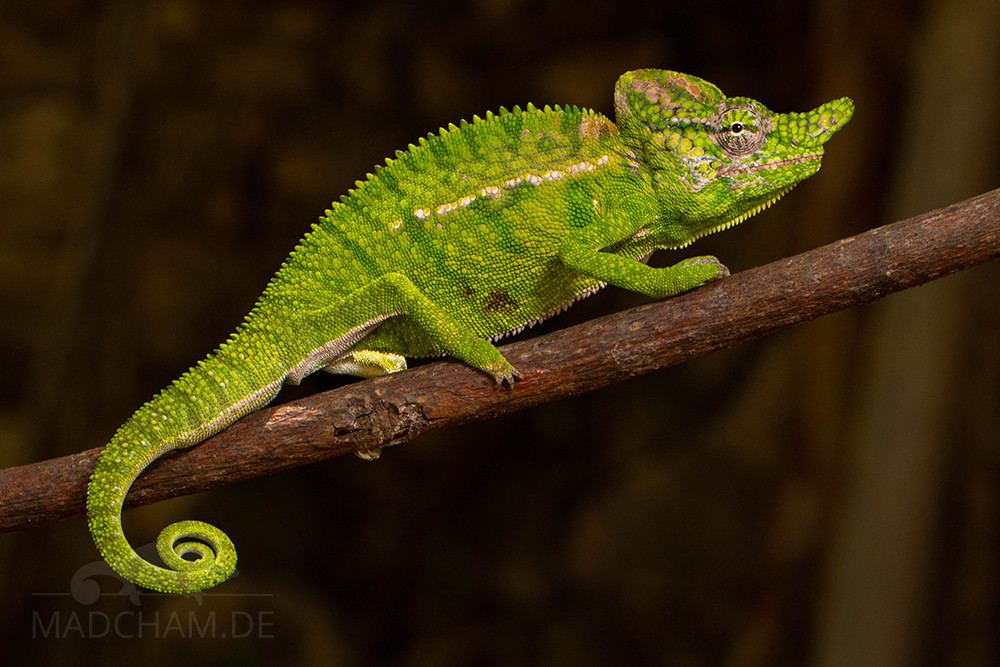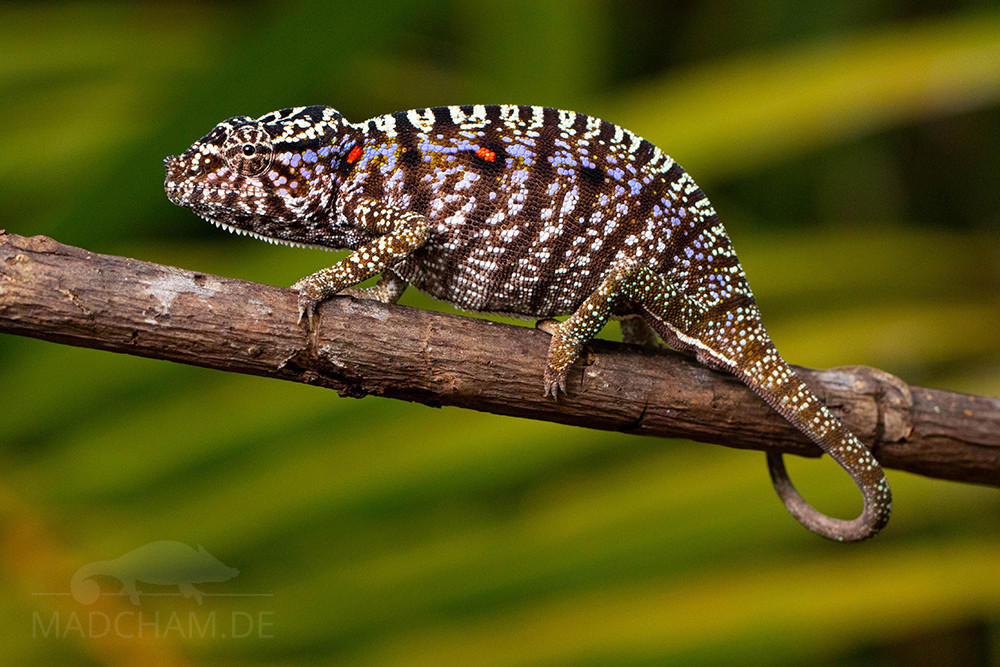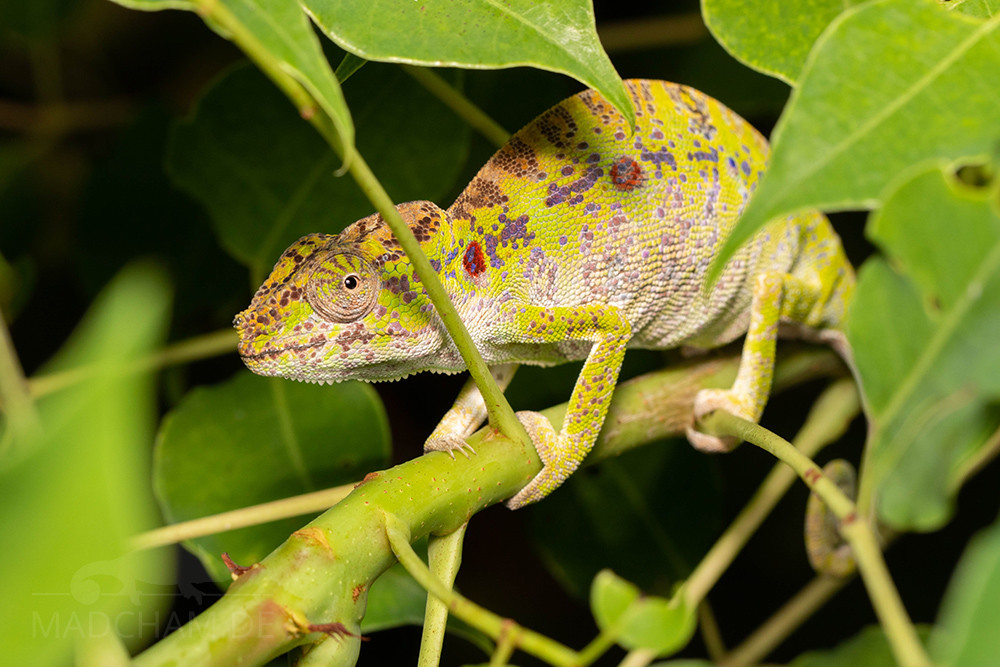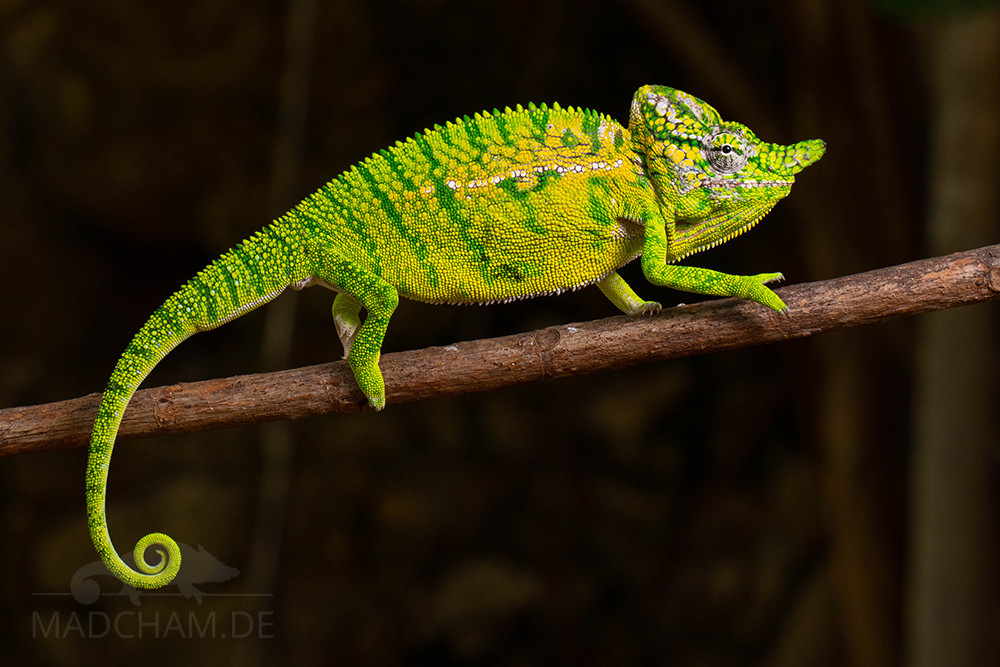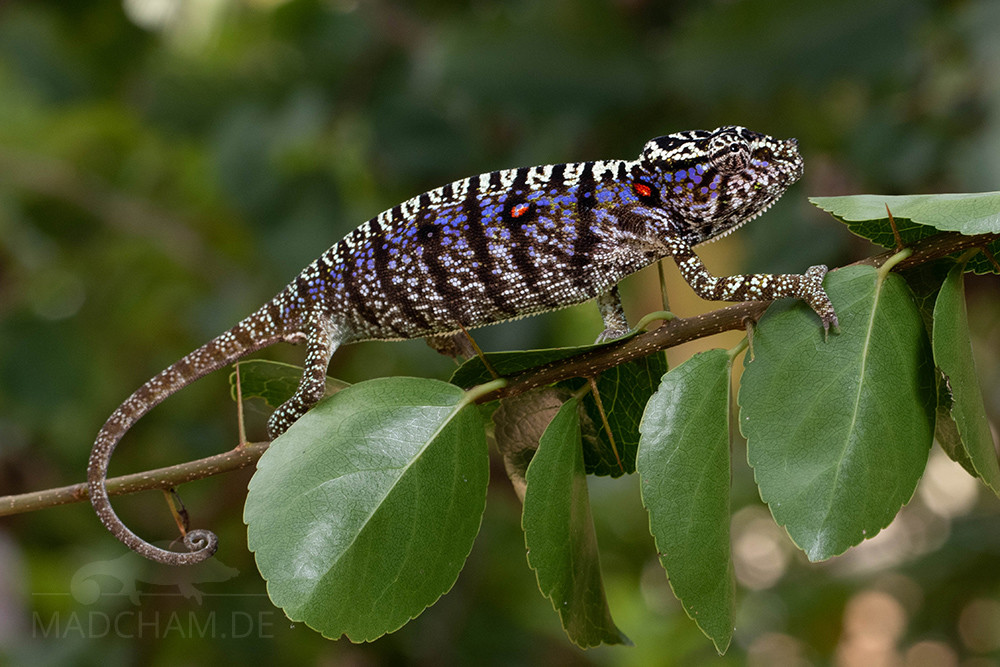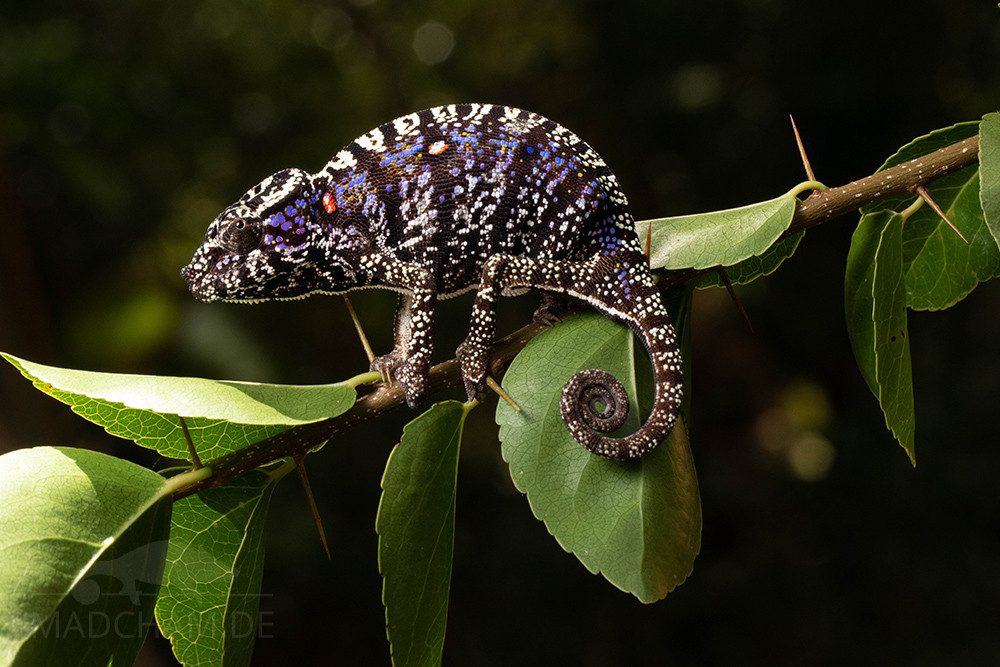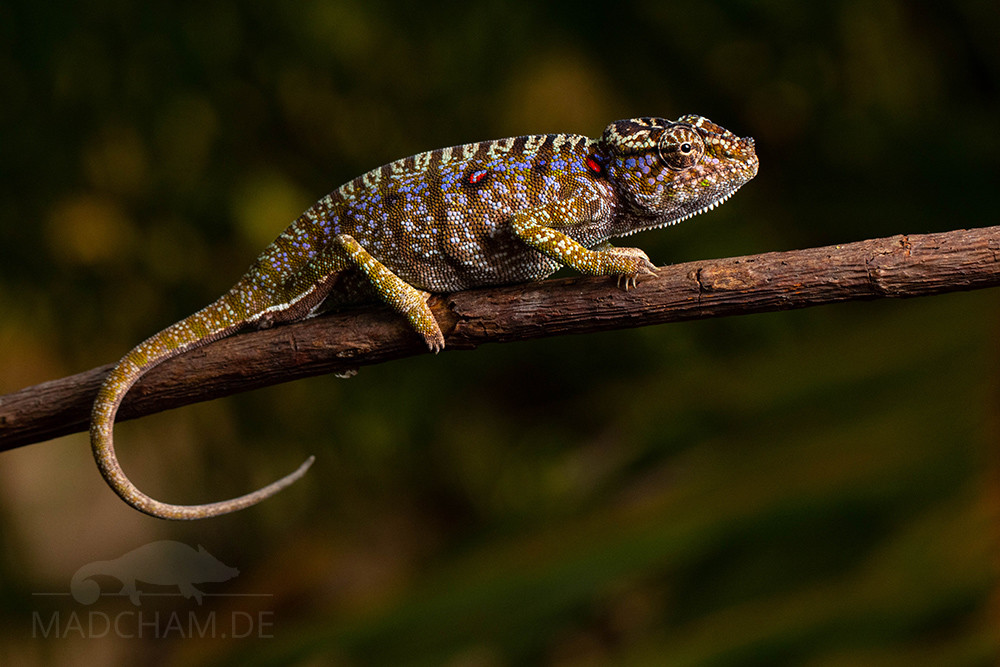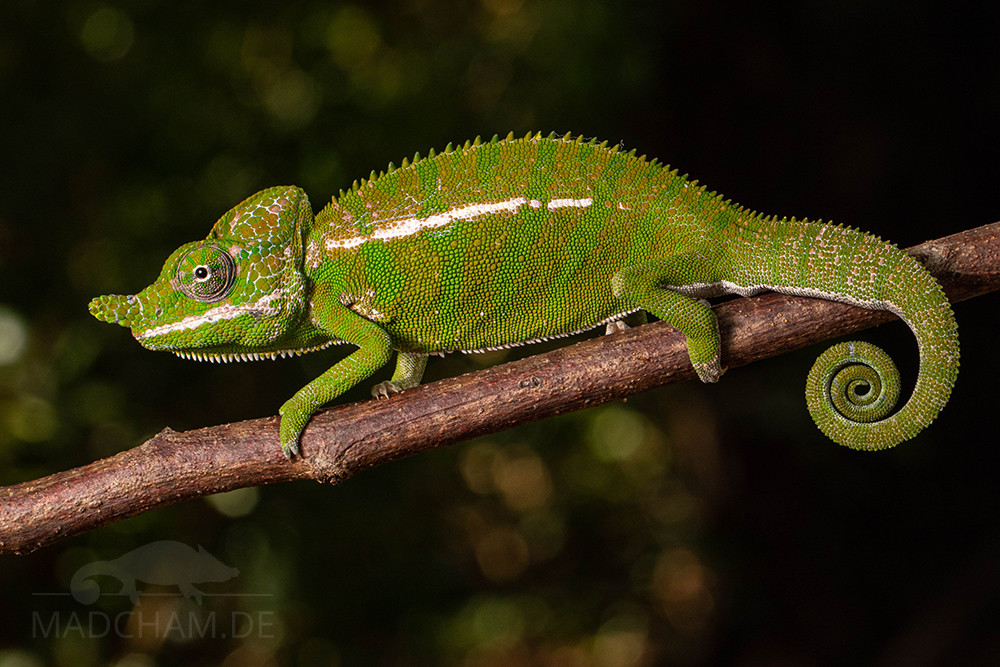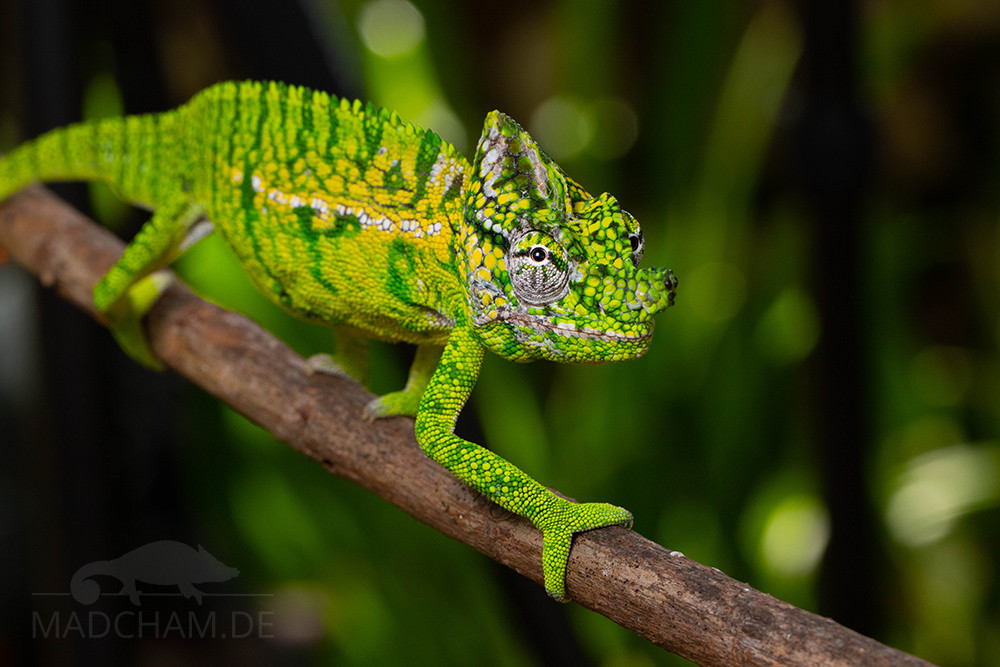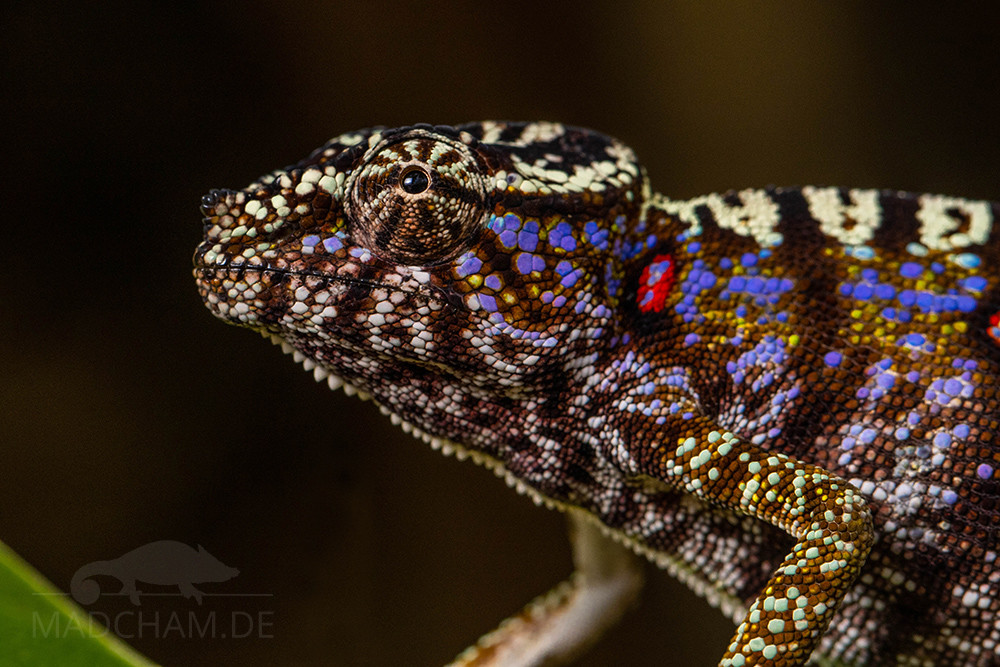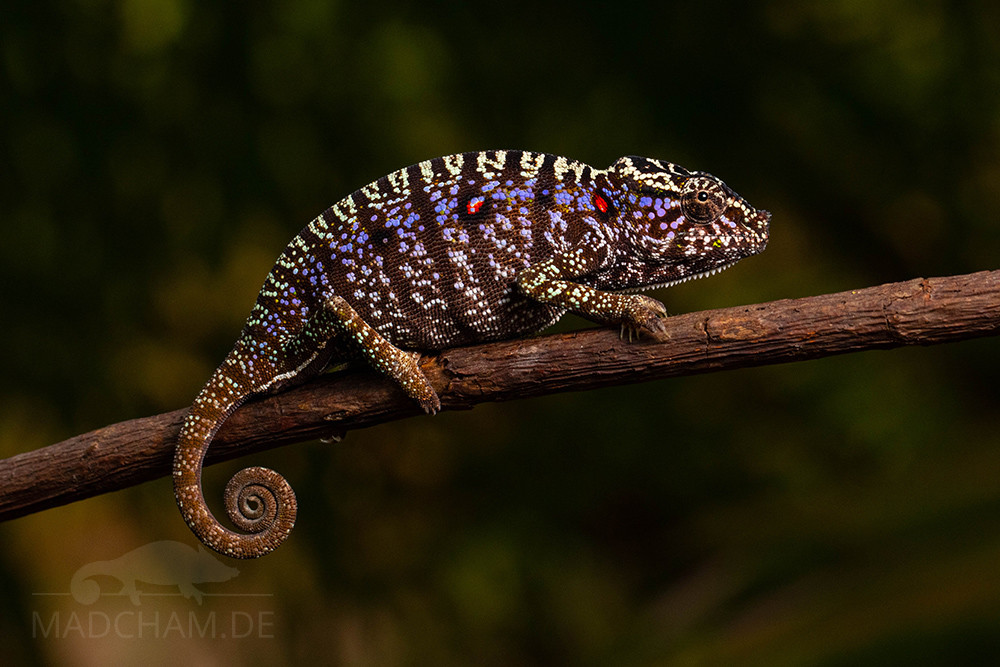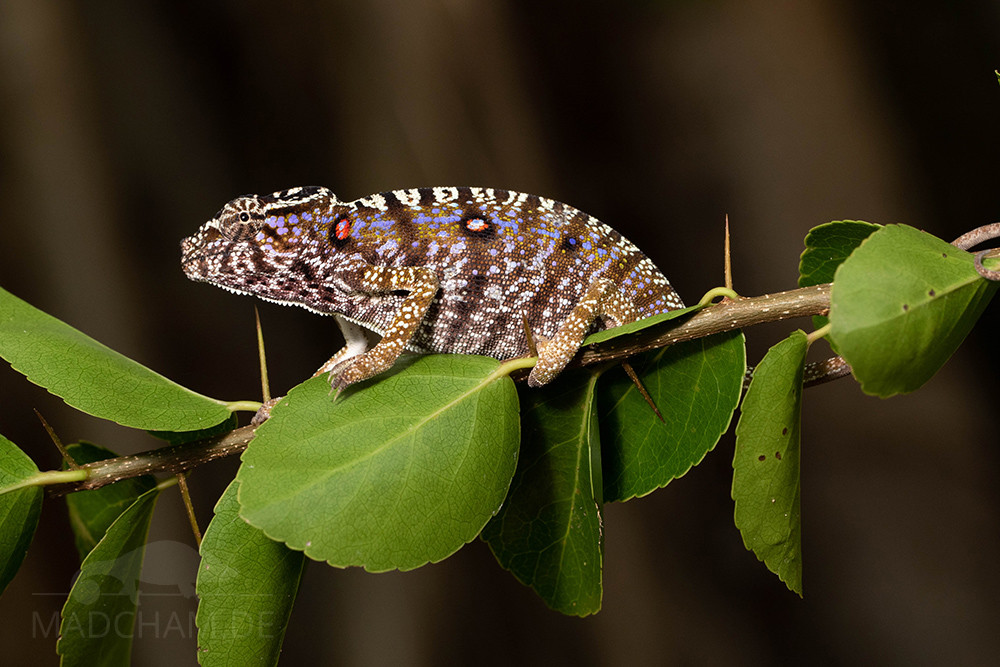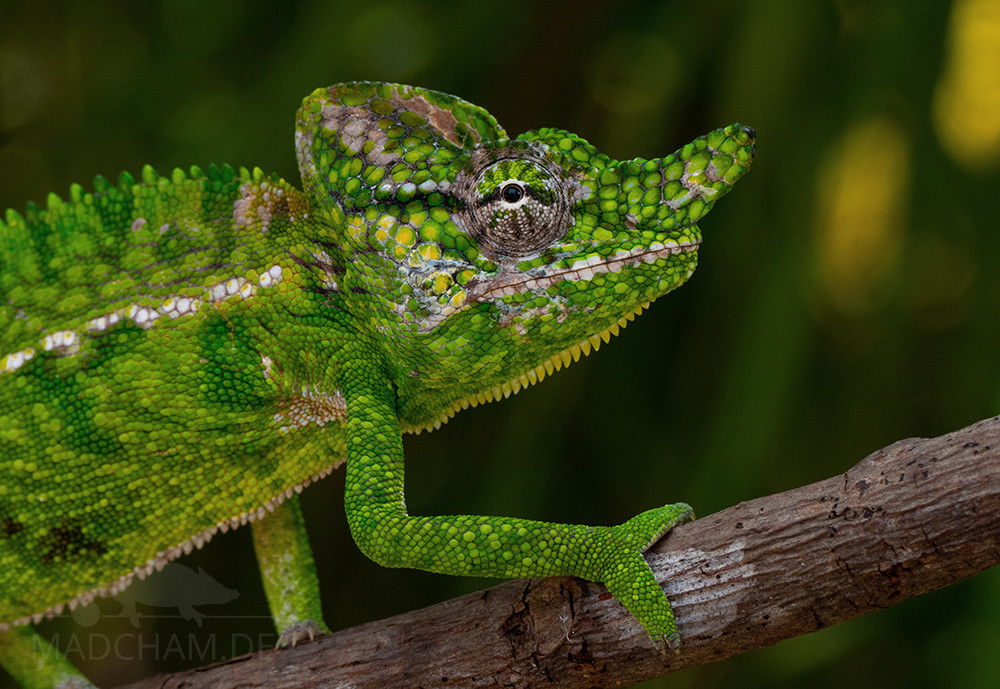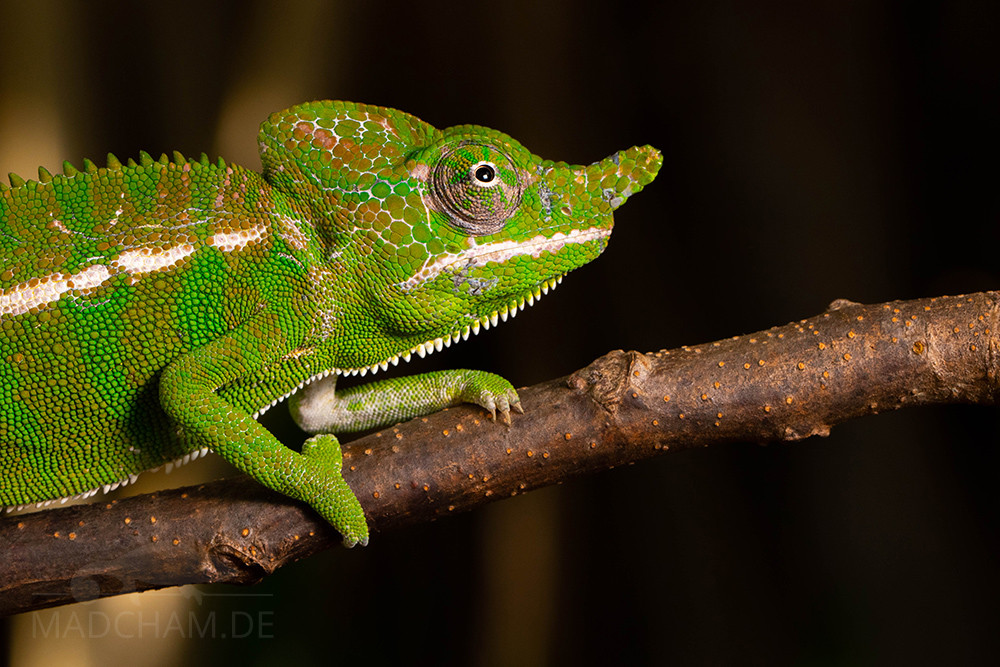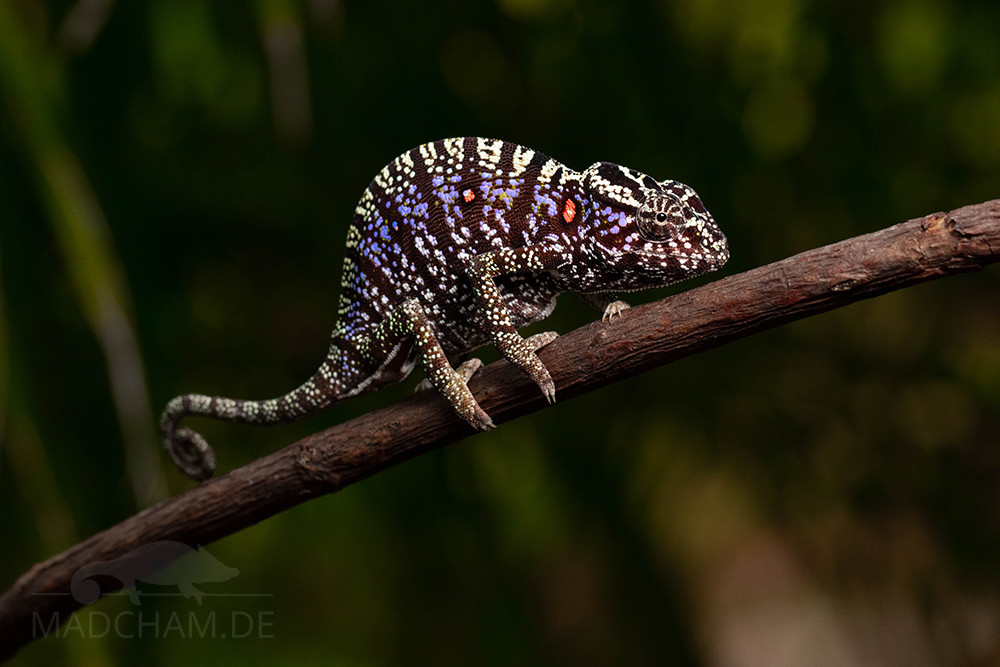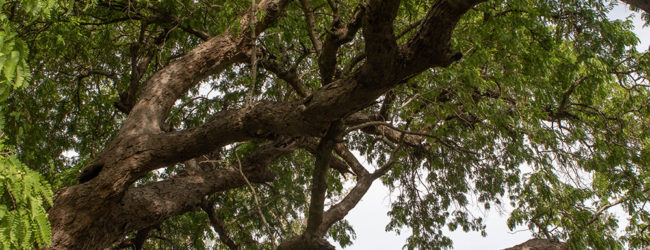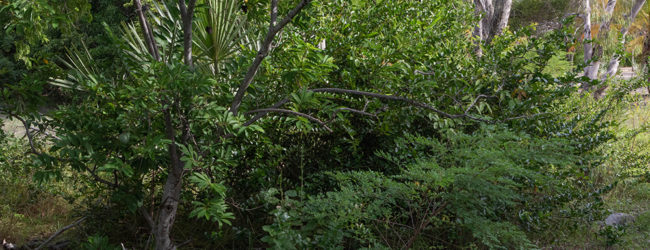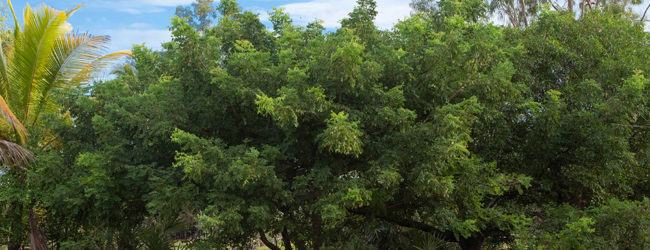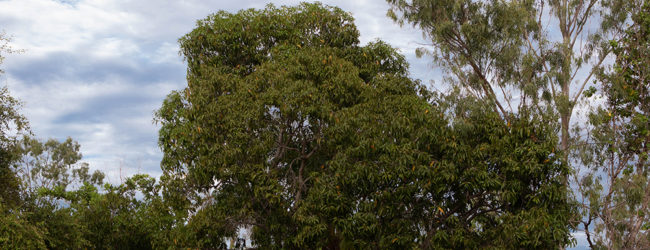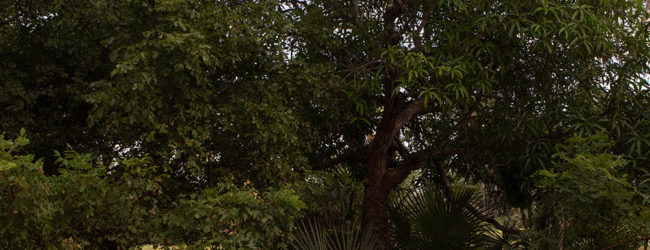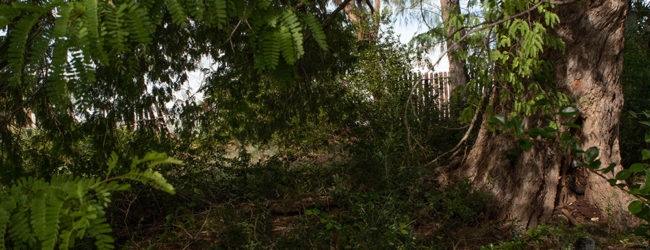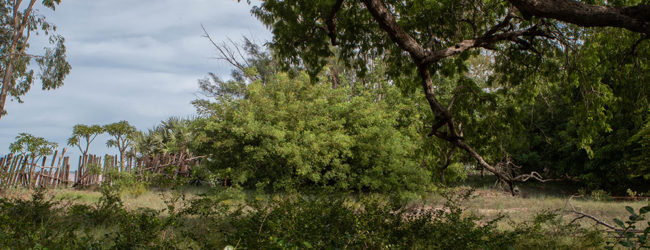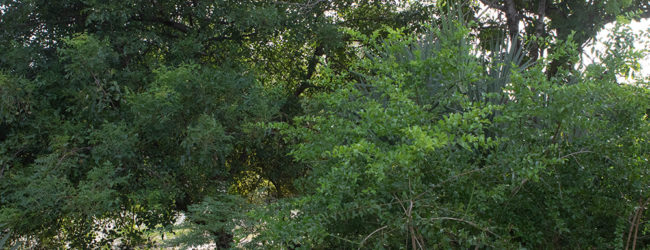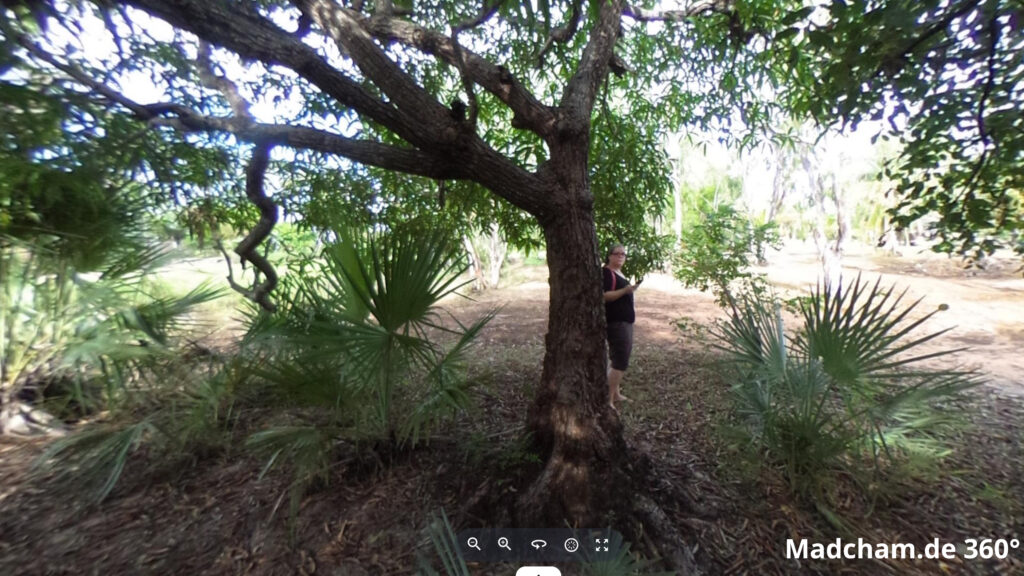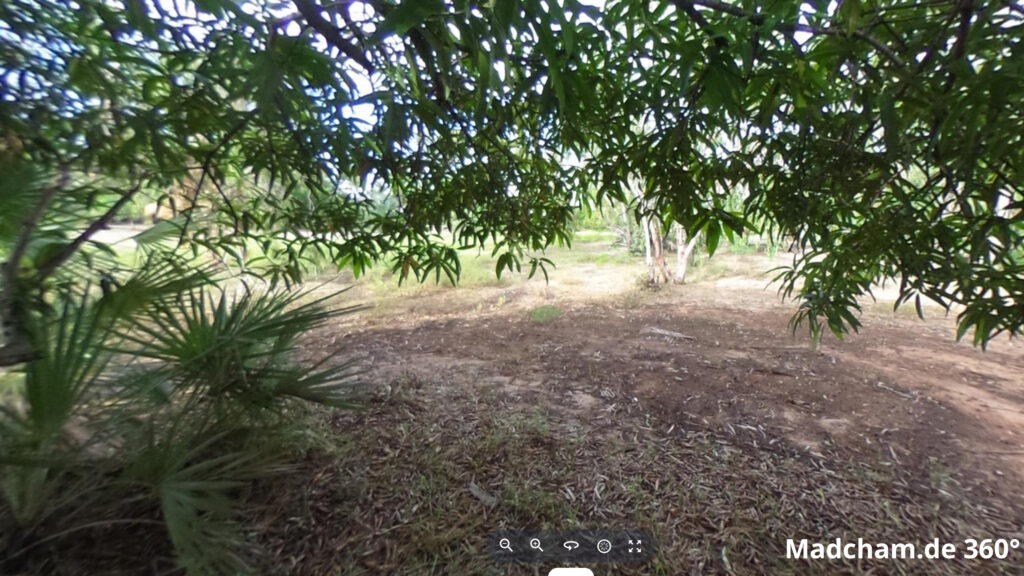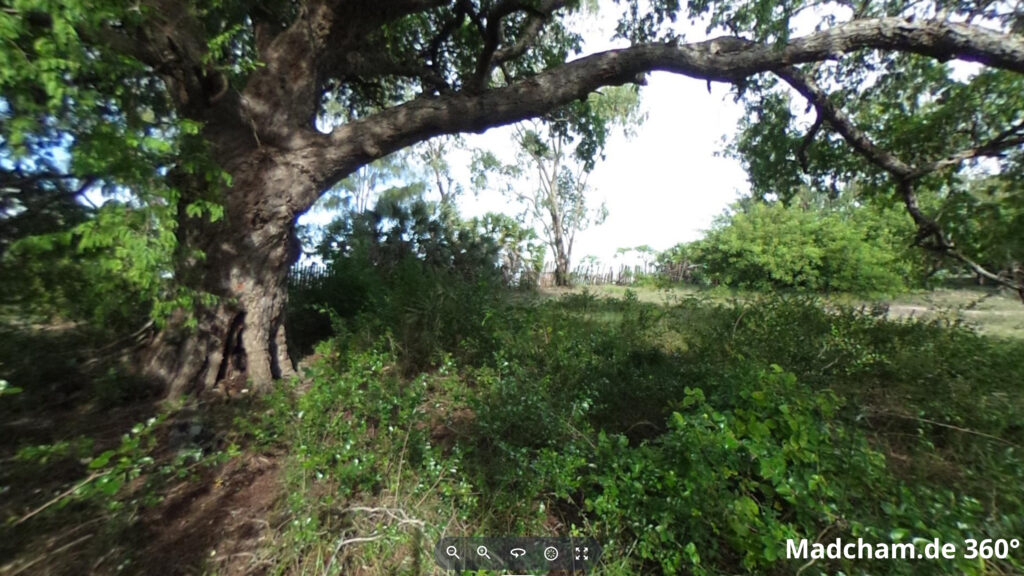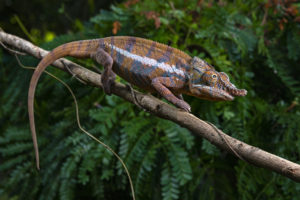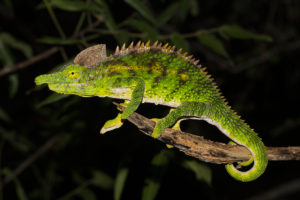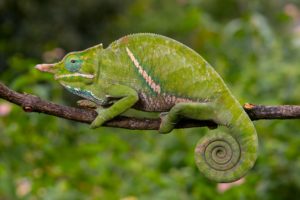no legal export possible
First description:
Boettger, 1893
Origin of the species name:
The paleontologist Oskar Böttger, then curator of the Senckenberg Museum in Frankfurt am Main, dedicated this chameleon species to the German zoologist Alfred Voeltzkow. Voeltzkow worked as a private lecturer in Strasbourg but was partly supported by the Senckenberg Museum. He undertook several expeditions to Madagascar. Between 1889 and 1905 Voeltzkow collected various species of birds, insects, reptiles, and plants on the island.
Distribution
Furcifer voeltzkowi lives in the dry forests of a small protected area called Antrema. It is located on the Katsepy Peninsula on the west coast of Madagascar, directly opposite the large city of Mahajanga. The bay of Bombetoka, colored red by the river Betsiboka flowing in the channel of Mozambique, separates Katsepy from Mahajanga. The dry forest of Antrema is unfortunately very little visited and is highly threatened by deforestation. However, Furcifer voeltzkowi does not only occur in the actual dry forest but also uses secondary vegetation such as eucalyptus trees and mangoes. Another distribution area of the species is near Soalala, a very difficult to access forest remnant a little further south of Katsepy on the west coast. Even during the dry season, it is difficult to get there.
Appearance and size:
Furcifer voeltzkowi looks enormously similar to his sister species, Furcifer labordi. However, Furcifer voeltzkowi becomes considerably larger: Total lengths from 15 to 23 cm for females and 23 to 26 cm for males. Furthermore, the males of Furcifer voeltzkowi have a smaller, bony nose process and a smaller helmet. Both sexes carry a gular, ventral, and dorsal crest.
Both sexes of Furcifer voeltzkowi are small color explosions. The males are light green with white lips and white, almost continuous lateral stripes. On the head, the skin between the green scales is partly also white. When excited the males can become bright yellow with dark green thin stripes and neon green marbling. Females are light green with light blue to white patches on the chest and abdomen and purple and black patterning on the back. Over the shoulder to the back several red, black-framed spots are visible. During pregnancy and under stress female Furcifer voeltzkowi show an impressively different coloring: They are then black with white spots, the sides are bright purple-bluish. An interesting observation on iNaturalist suggests that younger females may have a more green coloration, with dark stripes when excited.
Life cycle:
Presumably, Furcifer voeltzkowi live only as short as their sister species Furcifer labordi. Depending on the beginning of the rainy season, the young chameleons hatch in October or November, mate already in February or March and probably die again shortly after. As with Furcifer labordi, the life span of Furcifer voeltzkowi is probably very closely linked to the rainy season.
Particularities:
For many decades it was thought that this species belonged to Furcifer labordi. Only in 2018, it could be proven by means of specimens still existing in the museum that Furcifer voeltzkowi is an independent species. In 2020, the first evidence of living chameleons of the species in the wilderness of Madagascar for more than a hundred years was published by German researchers Frank Glaw, David Prötzel, Falk Eckhardt, and others. Females of Furcifer voeltzkowi, which had been unknown until 2020, were also described for the first time.
Weight table
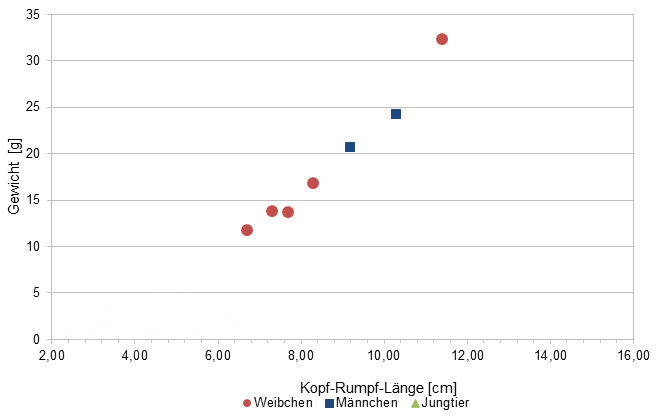
Gewicht = weight, Kopf-Rumpf-Länge = snout-vent-length
Weibchen = female, Männchen = male, Jungtier = juvenile
Since 2020 we have been measuring the weights of Furcifer voeltzkowi found by us on Madagascar, as far as the animals (and our scales) participate. So far there are only a few weights for this species, in the long run, it should be possible to read an average weight in relation to the head-torso-length (measured from the tip of the nose to the cloaca) from as many measurements as possible. It is important to know that all weights were measured towards the end of the rainy season (= best food supply), so these are probably maximum weights on Madagascar. Triangular symbols in females mean not pregnant, round symbols mean pregnant.
| Jan | Feb | Mar | Avr | May | Jun | Jul | Aug | Sep | Oct | Nov | Dec | |
| Average temperature | 27 | 28 | 28 | 28 | 27 | 26 | 25 | 26 | 27 | 28 | 29 | 29 |
| Minimum temperature | 24 | 24 | 24 | 25 | 22 | 20 | 20 | 20 | 22 | 24 | 25 | 24 |
| Maximum temperature | 31 | 31 | 32 | 33 | 33 | 31 | 30 | 32 | 32 | 33 | 33 | 32 |
| Rain days | 18 | 16 | 14 | 5 | 1 | 1 | 0 | 1 | 1 | 3 | 8 | 15 |
The given data were measured and compiled by us within several years with thermo- and hygrometers directly at the finding places of the animals. "Average temperature" means that the values of an entire month were calculated to an average value, e.g. all measured minimum values of a month were calculated to an average minimum value for February. This means in plain language that individual peak values of a day can be significantly higher or lower than the average minimum and maximum values. It is therefore possible that although the average maximum is 29 degrees, it was 33°C or even 35°C warm on some days of the month.
The climate on the Katsepy Peninsula is one thing above all: Unbelievably hot. You are actually always sweating, even if you do not move at all. Temperatures above 30°C are the rule. At night, temperatures in the rainy season fall only slightly below 25°C, but during the dry season, they drop significantly to 18°C. Therewith, especially in the dry season, the difference between the day and night temperatures is partly quite enormous.
Katsepy has only a short rainy season from November to March during which the plant world can recover. In some years it is even shorter. From about April, it becomes almost dust-dry on Katsepy - rainy days are the absolute exception until October. Sun and heat are in abundance every day.
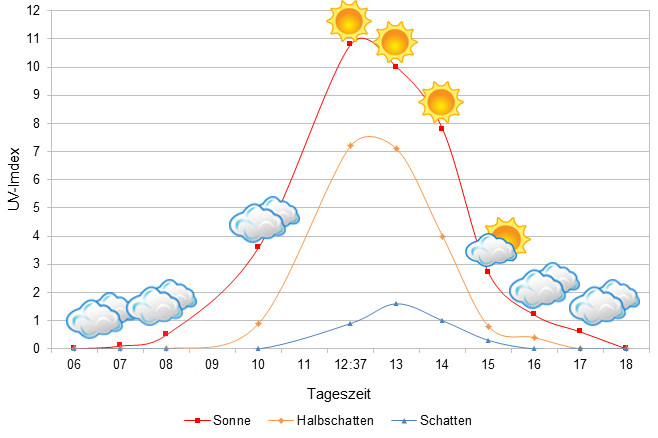
The UVB data were measured with a Solarmeter 6.5 in spring (March) at the highest activity time of the chameleons. The maximum values to be achieved by the chameleon in the habitat were measured.
Habitat:
The species lives in the dry forest of Antrema as well as in the adjacent, overgrown secondary vegetation. Furcifer voeltzkowi does not seem to be choosy. They can be found on mangos as well as on native plants. They prefer densely leafy trees with thin branches and do not shy away from bushes with many thorns. The soil of the Katsepy Peninsula consists mainly of laterite or a sand-laterite mixture.
Below you will find some 360° pictures of Katsepy that we took during the rainy season. If you click on the respective image, the pictures will open in an enlarged view in a separate window. You can use the mouse to rotate in all directions. You also have the option of running the images in full-screen mode. Enjoy!

